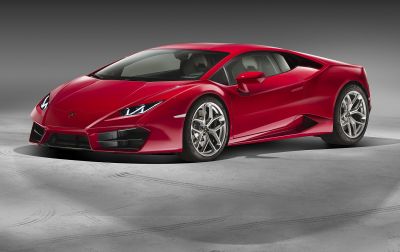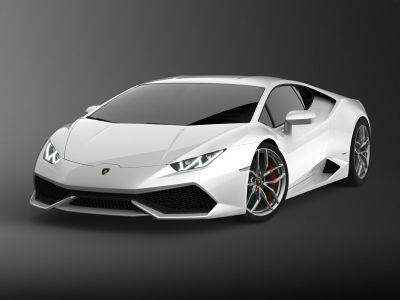 1977 Ferrari 512 BB Dimensions, Size & Specs
1977 Ferrari 512 BB Dimensions, Size & SpecsMeasurements of the 1977 Ferrari 512 BB, engineered for optimal performance and comfort
| Dimensions | |
|---|---|
| Length: | 4400 mm173.2 in14.4 ft |
| Width: | 1830 mm72.0 in6.0 ft |
| Height: | 1120 mm44.1 in3.7 ft |
| Ground Clearance: | 125 mm4.9 in0.4 ft |
| Weight Specifications | |
| Curb Weight: | 1499 kg3305 lbs |
The Ferrari 512 BB (Berlinetta Boxer), produced between 1976 and 1984, is an iconic coupe renowned for its performance and distinctive mid-engine design. Introduced in 1977, the 512 BB marked a significant evolution in Ferrari's lineup by incorporating a flat-12 engine, lending the car a unique driving character and balance. In terms of size, this classic coupe measures 4400 mm (173.2 inches) in length, 1830 mm (72 inches) in width, and stands just 1120 mm (44.1 inches) tall, emphasizing its low and sleek silhouette. Weighing in at 1499 kg (3306 lbs), the 512 BB strikes a balance between sporty agility and robust build quality. Its ground clearance is 125 mm (4.9 inches), typical of high-performance sports cars, enhancing its aerodynamics and road grip. This combination of compact dimensions and a lightweight body allowed the 512 BB to deliver exhilarating performance while maintaining precise handling characteristics. Its coupe body style combined with Ferrari's engineering expertise from the late 1970s makes the 512 BB a benchmark for mid-engine sports cars of its era. Collectors and enthusiasts appreciate the 512 BB not only for its engineering and performance but also for its elegant proportions and driving dynamics within Ferrari's Berlinetta Boxer range.
Discover the standout features that make the 1977 Ferrari 512 BB a leader in its class
Have a question? Please check our knowledgebase first.
The Ferrari 512 BB measures 4400 mm (173.2 inches) in length, 1830 mm (72.0 inches) in width, and stands at 1120 mm (44.1 inches) tall. These dimensions give the car a low-slung, wide profile typical for a high-performance coupe, designed to optimize aerodynamics and stability. The compact height contributes to a sporty stance, while the width ensures stable cornering and enhances road presence.
The Ferrari 512 BB has a curb weight of 1499 kg (approximately 3305 lbs). This weight is relatively moderate for a mid-engined supercar of its era, balancing structural rigidity and performance. A lower weight aids acceleration, handling, and braking, contributing to the 512 BB's dynamic driving experience. The weight distribution also benefits from its mid-mounted engine layout, enhancing balance and agility.
The Ferrari 512 BB has a ground clearance of 125 mm (4.9 inches). This low ride height is designed for performance and aerodynamic efficiency, allowing it to hug the road at high speeds. While this enhances road grip and handling on smooth surfaces, it may limit usability on uneven roads, speed bumps, or steep driveways, requiring cautious driving in everyday urban conditions.
Given its dimensions—4400 mm (173.2 in) in length, 1830 mm (72.0 in) in width, and only 1120 mm (44.1 in) in height—the Ferrari 512 BB generally fits into a standard garage space. However, owners should consider the overall width carefully, especially if their garage is narrow or has tight entry points. Its low height means you shouldn't have clearance issues vertically, but extra caution is advised due to its wide stance and low ground clearance to avoid scraping when entering steep ramps.
The Ferrari 512 BB is an evolution of the 365 GT4 BB. The 512 BB retained a similar overall size but incorporated important refinements. Both cars have comparable length and width, but the 512 BB often features slightly improved weight distribution and marginally reduced weight through engineering advances. Its dimensions, including the low height and wide stance, remain consistent to maintain the car's mid-engined performance focus, but with a more refined aerodynamic profile and updated styling.
Dimensionally, the Ferrari 512 BB fits well within the typical size range of late 1970s and early 1980s supercars. Its length of 4400 mm (173.2 inches) and width of 1830 mm (72.0 inches) are comparable to contemporaries like the Lamborghini Countach and Porsche 911 Turbo. The height of only 1120 mm (44.1 inches) is very low, underscoring its race-inspired design ethos. While some supercars of the era might be longer or wider, the 512 BB's balance of size, weight, and low profile exemplifies Ferrari’s approach to high-performance road cars of its time.
The Ferrari 512 BB is a two-seater coupe designed primarily for driver engagement and performance rather than passenger comfort or cargo space. Given its exterior dimensions—4400 mm long, 1830 mm wide, and only 1120 mm high—the interior cabin is compact with limited headroom and legroom for two occupants. The low height emphasizes a sporty driving position, but interior room is tight compared to larger GT cars, reflecting the car’s focus on agility and weight savings over spaciousness.
The relatively wide width of 1830 mm (72.0 inches) and low overall height of 1120 mm (44.1 inches) give the Ferrari 512 BB a low center of gravity and wide track, which significantly contribute to its sharp handling and road grip. The dimension choices support stable cornering at high speeds, reducing body roll and enhancing driver confidence. Its length of 4400 mm (173.2 inches) balances high-speed stability with agility, making the car responsive but planted.
Throughout its production from 1976 to 1984, the Ferrari 512 BB saw relatively stable core dimensions, with length at 4400 mm, width 1830 mm, and height 1120 mm remaining constant. Weight hovered around 1499 kg (3305 lbs) but could vary slightly due to updates, materials, or optional equipment. While mechanical and styling updates occurred, dimension changes were minimal, reflecting Ferrari’s intent to preserve the car’s original design balance focused on performance and aesthetics.
The Ferrari 512 BB’s low height of 1120 mm (44.1 inches) and ground clearance of just 125 mm (4.9 inches) make it a challenging car for daily driving, especially in areas with speed bumps, potholes, or steep driveways. Its wide width of 1830 mm (72.0 inches) requires more attention for maneuvering in tight urban spaces. While it fits in standard garages, drivers need to be mindful of its low ride height and sporty suspension setup, which provide an engaging drive but sacrifice some comfort and practicality compared to ordinary passenger cars.
Discover similar sized cars.

| Production: | 2015-2019 |
|---|---|
| Model Year: | 2016 |
| Length: | 4459 mm175.6 in |
| Width: | 2236 mm88.0 in |
| Height: | 1165 mm45.9 in |

| Production: | 2014-2019 |
|---|---|
| Model Year: | 2014 |
| Length: | 4459 mm175.6 in |
| Width: | 2236 mm88.0 in |
| Height: | 1165 mm45.9 in |
